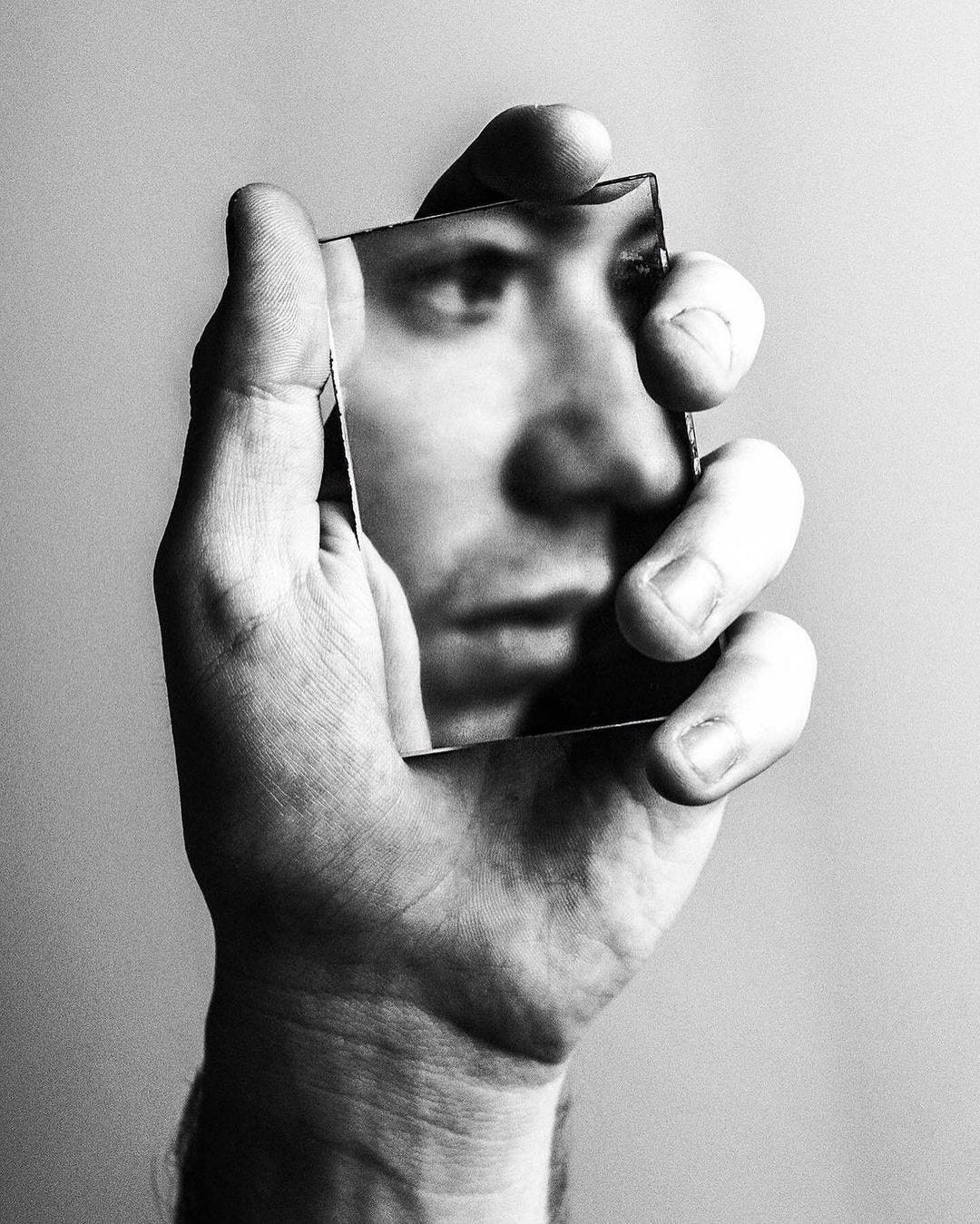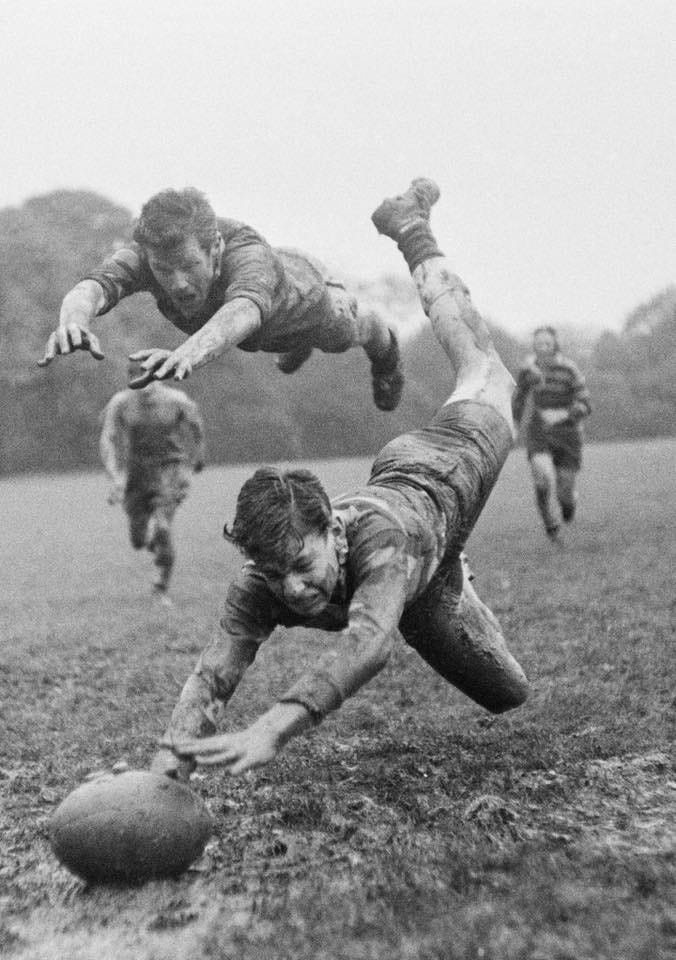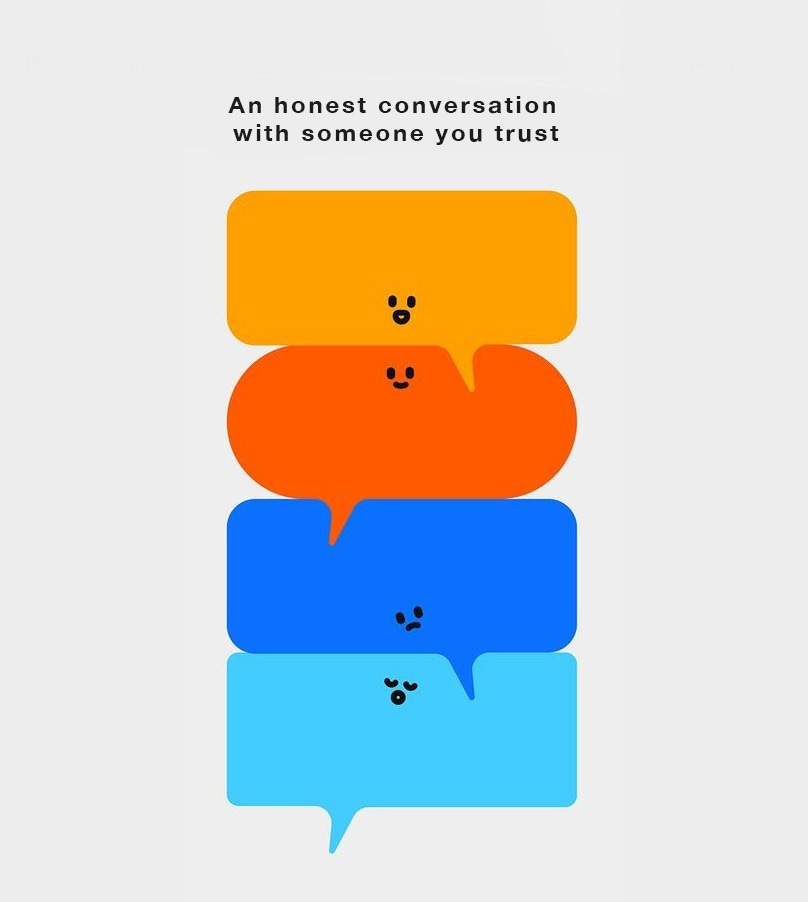About Those Insecurities...
Turning Self-Doubt Into Your Greatest Teacher
Hi, I'm Manuel Saez, 2x Founder, Award-Winning Designer, and Emotional Intelligence Coach 🌻 Here I Share the advice I wish I had while building my businesses ➜ I love fixing old motorcycles 🛵🏍️
Reading time: 4 min.
Contents:
Insecurity Hides in Plain Sight
Small Wins Build Confidence
Turning Self-Doubt Into Confidence
Those Deep-Rooted Insecurities
The Next Time Doubt Creeps In…
Maybe the noble dream you’re chasing isn’t driven by purpose—but by insecurity.
It’s funny how we can be so wrapped up in self-doubt that we stop noticing it. It becomes background noise, quietly shaping our choices and limiting our potential.
Everyone has insecurities.
Even the people who think they don’t—that thought alone is often a sign of insecurity. Pretending they don’t exist is pointless. They’ll always be there.
The challenge isn’t getting rid of them—it’s learning how to use them.
Insecurities and fears can be the biggest dream killers—or the best guidance we have. It all depends on how we see them.
For a long time, I thought being insecure was a weakness—something that made me vulnerable.
So I pushed harder. Worked more. Tried to muscle my way through to success. If I ignored my fears and insecurities long enough, I figured they’d eventually disappear.
But they didn’t. And fighting them? That was exhausting.
The more I resisted them, the more power they had over me. I spent years caught in that cycle, refusing to acknowledge what was really holding me back—only to get knocked down by life again and again.
Eventually, I realized I was approaching it all wrong.
Insecurity wasn’t something to fight—it was something to listen to. It wasn’t the whole truth, but it was a clue. A signal pointing to where I needed to grow.
The moment I stopped trying to overpower my insecurities and started learning from them, everything changed.
Instead of running from my fears, I started paying attention to what they were telling me.
And that shift made all the difference.
Insecurity Hides in Plain Sight
The signs are there—if you’re willing to look.
The first step to using insecurity as a guide for better decisions is awareness.
If we want to understand what’s holding us back, we have to be willing to look closely—really look.
Insecurities don’t always introduce themselves as fear.
They wear disguises.
They show up as perfectionism, procrastination, self-sabotage.
They whisper instead of shout.
But once you know what to listen for, they become easier to spot.
Here are a few patterns I’ve noticed in myself—maybe you’ll recognize them too:
Endless comparison. It starts with a quick scroll. Someone else’s win makes you question where you are. Before you know it, you’re deep in someone else’s success story, measuring your worth against a highlight reel. And in the process, you forget your own.
The need to win at all costs. Competition isn’t bad—it drives progress. But when winning feels like survival, when every loss feels personal, it stops being about growth and starts being about proving something—to yourself, to others, to some invisible standard you don’t even remember setting.
Avoiding change, even the good kind. A new opportunity arises, and instead of excitement, there’s hesitation. A quiet but persistent voice whispers, What if I fail? The unknown feels riskier than staying where you are—even if where you are isn’t working.
Taking feedback as a personal attack. A simple critique can send you spiraling. Not because it’s wrong, but because some part of you believes it confirms what you’ve feared all along—that you’re not enough. That maybe everyone else sees it too.
There are more, but this is a good start. Once you recognize these patterns, you’ll start to see how seemingly noble habits—working harder, striving for perfection, avoiding risks—can actually be insecurity in disguise.
Self-awareness is uncomfortable. No one likes to admit they’re caught in these cycles.
But naming the pattern is what weakens it.
When you start recognizing these behaviors in real time, you create space between the thought and the reaction.
And in that space, you get to choose what happens next.
Small Wins Build Confidence
So many times, I’ve found myself stuck in a hole that felt too big to climb out of.
The goal I was chasing seemed so far beyond my abilities that I couldn’t see a way forward. I had no confidence in myself because I was looking at the whole challenge at once—and yes, that was overwhelming.
But the trick is to break it down into smaller, attainable goals.
My dad had a saying:
“How does a mouse eat an elephant? One bite at a time, son.”
That always stuck with me. When you focus on the next immediate step instead of the massive goal ahead, the task feels manageable. And when something feels manageable, you can move with confidence.
I remember a rugby game from my younger years where we were getting completely outplayed.
Nothing was going our way, and you could see it in everyone’s body language—we moved like a team that had already lost.
Shoulders slumped. Heads down. Hesitation in every play.
We didn’t believe we could win, and that lack of confidence showed up in how we played.
At halftime, our coach didn’t give us some grand motivational speech about making a comeback.
Instead, he told us to forget the scoreboard and focus on the basics:
“Don’t think about the end of the game. Don’t think about five minutes from now. Just focus on the next play—get the pass right, make the tackle, cover your position.”
So we did.
One good play turned into another. We started moving differently—faster, sharper, more sure of ourselves.
We didn’t win, but by the end, we weren’t the same hesitant team that had walked off the field at halftime.
That lesson stuck with me:
Confidence isn’t something you have or don’t have—it’s something you build, moment by moment, action by action.
Every completed pass. Every tackle. Every position covered. Each one added to our confidence.
Every small success was like a building block.
I see small wins like bricks. Stack them up, and eventually, you build a castle.
But for a long time, I made the mistake of only focusing on the big picture—the castle I wanted to build—without appreciating the bricks it took to get there.
When I started valuing and being grateful for each small victory, things shifted.
The castle started to take shape.
Confidence isn’t built in one big moment. You don’t suddenly wake up one day and feel confident.
It’s built in the quiet, consistent stacking of wins, no matter how small.
Turning Self-Doubt Into Confidence
Most people think confidence is something you either have or you don’t.
That some people are just wired to trust themselves while others are doomed to second-guess every decision.
But that’s not how it works.
Confidence isn’t something you’re born with—it’s something you cultivate.
The real shift happens when you stop seeing self-doubt as a sign that something is wrong with you and start seeing it as part of the process.
The goal isn’t to eliminate doubt but to learn how to operate despite it.
Here’s what works for me:
Detach from the doubt.
Self-doubt feels personal, but it’s not. It’s just a thought pattern—one that gets reinforced over time. Instead of thinking, I’m not confident enough, I reframe it:
"I’m experiencing self-doubt right now—where is that coming from?"
That small shift helps me see it as something separate from who I am—something I can work on rather than something that defines me.
Redefine confidence.
Most people think confidence means knowing you’ll succeed. It doesn’t. Confidence is believing you’ll figure it out even if you fail. It’s trusting yourself to handle whatever happens—not guaranteeing a perfect outcome.
Borrow confidence from action.
Sometimes, confidence has to come after action, not before. Instead of thinking, I don’t have the confidence to do this, I flip it:
"I need to do this to gain confidence."
Take action first—small steps at a time. Confidence will follow.
Separate preparation from hesitation.
It’s easy to mistake endless preparation for readiness. But at some point, preparation turns into hesitation.
If you’re waiting for a moment when you feel 100% ready, you’ll be waiting forever.
Take the leap while you still feel unsure—that’s how confidence is built.
Trust the process.
Confidence doesn’t appear overnight. It’s built through repetition, through showing up, through proving to yourself—again and again—that you are capable.
The first time will feel uncomfortable.
The second time, slightly less.
By the tenth time, it won’t feel like such a big deal.
That’s how the shift happens.
Those Deep-Rooted Insecurities
Some insecurities aren’t just passing thoughts.
They’re ingrained. Built over years.
And the longer they’ve been there, the harder they are to untangle.
You can’t outthink them in a day, and you can’t will them away just because you want to.
They’ve had time to take root—so give yourself time to undo them.
The first step is recognizing where they come from.
Many insecurities don’t start in adulthood—they’re echoes of things we picked up when we were younger.
Maybe you were only praised for achievements, so now you tie your worth to success.
Maybe criticism hit harder than it should have, so now you second-guess everything.
Maybe you were taught that mistakes were something to be ashamed of, so now you avoid risks at all costs.
But once you see these patterns, you have a choice:
Let them keep running your life, or start rewriting the script.
Here’s what has helped me:
Question the stories you tell yourself. Insecurities thrive in unchallenged thoughts. That voice in your head saying I’m not good enough—where did that belief come from? Is it based on reality, or is it an old script that’s been playing on repeat? When I started challenging my own doubts, I realized most of them weren’t based on truth—they were just deeply ingrained fears disguised as facts.
Seek outside perspective. Some insecurities run so deep that seeing them clearly on your own is tough. Therapy, coaching, or even an honest conversation with someone you trust can help you see yourself differently. Sometimes, the right person can challenge your assumptions in a way that makes you stop and think, Wait… what if I’ve been wrong about myself this whole time?
Expose yourself to discomfort. Understanding insecurities is one thing—overcoming them is another. The only way I’ve weakened mine is by doing the very things they told me not to. Speaking up when I wanted to stay quiet. Taking the opportunity even when I felt unprepared. Each time I pushed through, I proved to myself that I was more capable than I thought.
Give yourself time. I didn’t build these insecurities overnight, and I wasn’t going to undo them overnight either. The key is patience. Every small step, every time I pushed back against doubt, was another brick in the foundation of a stronger, more confident version of myself.
The goal isn’t to erase insecurities—it’s to make sure they’re not in charge
The Next Time Doubt Creeps In…
Insecurity keeps us stuck.
It convinces us to stay small, to hold back, to wait until we feel ready.
But fear isn’t a stop sign—it’s a signal.
It points to where we need to grow.
Confidence isn’t something you wake up with one day.
It’s built through action—small wins, showing up even when you don’t feel ready, proving to yourself that you are capable.
It’s about stacking those bricks, one by one, until the castle starts to take shape.
Deep-rooted insecurities take time to unravel, and that’s okay.
The goal isn’t to erase fear but to move forward in spite of it.
So the next time insecurity creeps in, ask yourself:
What if this isn’t a reason to stop?
What if it’s an invitation to grow?
Sending you good vibes 🌻
Manuel







love this post, was looking for reads about this because i’ve been feeling it heavily recently as a college student (:
Great post! I was bullied as a kid and it really created huge self-doubt and insecurity, I never felt good enough, even when other people tried very hard to convince me otherwise. I really appreciated the ideas you've put here, I will be trying these out. Thanks!